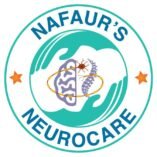Spasticity and Movement Disorders
Spasticity and Movement Disorders
Although many children have spasticity or other movement disorders, few pediatric neurosurgeons are interested in their management. Spasticity and other movement disorders occur predominantly in children with cerebral palsy (CP). Spasticity has enormous clinical and economic implications. If untreated, it leads to progressive disability, discomfort, and deformity, and to multiple orthopedic operations to correct the deformities. Pediatric neurosurgeons encounter dystonia most frequently in CP, subsequent to head injury, stroke, or tumor removals, and rarely, in association with degenerative disorders such as Wilson’s disease, Leigh’s disease, or Hallervorden–Spatz disease. Severe athetosis is exceedingly difficult to treat. No oral medications are particularly effective, botulinum toxin injections are unhelpful, ITB helps only mildly, and the few case reports of DBS for choreoathetosis report little benefit.
Treatment Options
- Oral Medication
- Intramuscular (IM) medications
- Intrathecal medication
- Surgery




